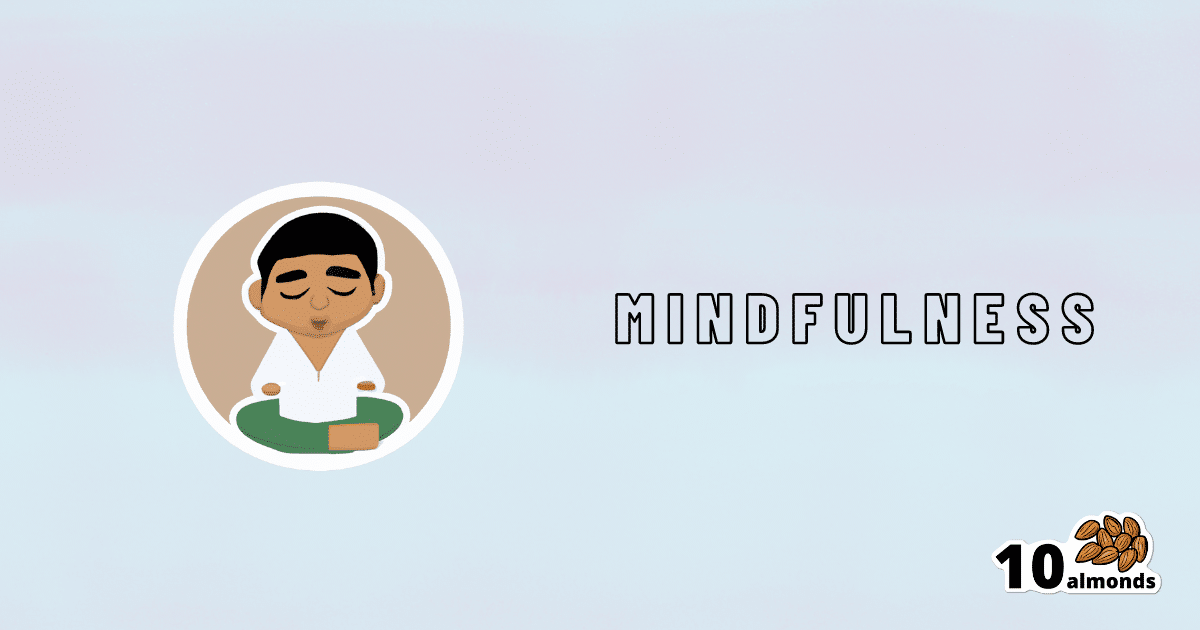No-Frills, Evidence-Based Mindfulness
What are the benefits of mindfulness? They include reducing stress, pain, and fatigue, improving quality of life, and providing relief from digestive and sleep disorders. The evidence supports its effectiveness.

What’s on your mind, really?
We hear a lot about “the evidence-based benefits of mindfulness”, but what actually are they? And what is the evidence? And, perhaps most importantly: how do we do it?
What are the benefits?
The benefits of mindfulness are many, and include:
- reducing stress
- reducing pain
- improving quality of life
- reducing fatigue
- providing relief from digestive disorders
- reducing symptoms of sleep disorders
- improving immune response
- providing support for caregivers
The evidence is also abundant, and includes:
- Effects of mindfulness exercises as stand-alone intervention on symptoms of anxiety and depression: Systematic review and meta-analysis
- Fusing character strengths and mindfulness interventions: Benefits for satisfaction and performance
- Evidence for the Role of Mindfulness in Cancer: Benefits and Techniques
- Effects of mindfulness-based stress reduction on anxiety symptoms: A systematic review and meta-analysis
- The benefits of meditation and mindfulness practices during times of crisis such as COVID-19
Sounds great… What actually is it, though?
Mindfulness is the state of being attentive to one’s mind. This is at its heart a meditative practice, but that doesn’t necessarily mean you have to be sitting in the lotus position with candles—mindfulness can be built into any daily activity, or even no activity at all.
An exercise you can try right now:
Take a moment to notice everything you can hear. For this writer, that includes:
- The noise of my keystrokes as I type
- The ticking of the clock on the wall
- The gentle humming of my computer’s processor
- The higher-pitched noise of my computer’s monitor
- Birdsong outside
- Traffic further away
- My own breathing
- The sound of my eyelids as I blink
Whatever it is for you, notice how much you can notice that you had previously taken for granted.
You can repeat this exercise with other senses, by the way! For example:
- Notice five things you can see in your immediate environment that you’ve never noticed before. If you’re at home reading this, you probably think you’re very familiar with everything around you, but now see that mark on the wall you’d never noticed before, or a quirk of some electrical wiring, or the stitching on some furnishing, for example.
- Notice the textures of your clothes, or your face, or perhaps an object you’ve never paid attention to touching before. Your fingertips, unless you have some special reason this doesn’t apply to you, are far more sensitive than you probably give them credit for, and can notice the tiniest differentiation in textures, so take a moment to do that now.
- Mindful eating can be an especially healthful practice because it requires that we pay every attention to what we’re putting in our mouth, tasting, chewing, swallowing. No more thoughtlessly downing a box of cookies; every bite is now an experience. On the one hand, you’ll probably eat less at a sitting. On the other hand, what a sensory experience! It really reminds one that life is for living, not just for zipping through at a speed-run pace!
What about mindfulness as a meditative practice?
Well, those are meditative practices! But yes, mindfulness goes for more formal meditation too. For example:
Sit comfortably, with good posture, whatever that means to you. No need to get too caught up in the physical mechanics here—it’d take a whole article. For now, if you’re sitting and comfortable, that’s enough.
Notice your breathing. No need to try to control it—that’s not what this is about today. Just notice it. The in, the out, whether you breathe to your chest or abdomen, through your nose or mouth, don’t worry about doing it “right”, just notice what you are doing. Observe without judgement.
Notice your thoughts—no need to try to stop them. Notice noticing your thoughts, and again, observe without judgement. Notice your feelings; are you angry, hopeful, stressed, serene? There are no wrong answers here, and there’s nothing you should try to “correct”. Just observe. No judgement, only observe. Watch your thoughts, and watch your thoughts go.
Did you forget about your breathing while watching your thoughts? Don’t worry about that either if so, just notice that it happened. If you have any feelings about that, notice them too, and carry on observing.
We go through so much of our lives in “autopilot”, that it can be an amazing experience to sometimes just “be”—and be aware of being.
Share This Post
Learn To Grow
Sign up for weekly gardening tips, product reviews and discounts.




